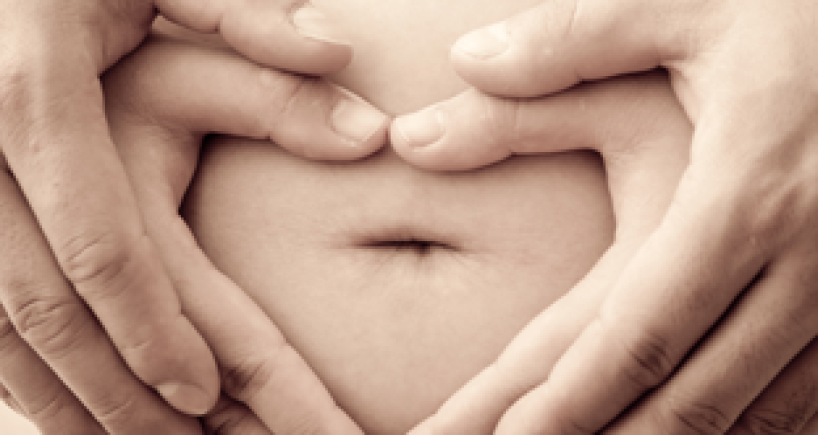
Obstetrics and Gynaecology
Have A Healthy Pregnancy
Have A Healthy Pregnancy Jul 26, 2014
 Your chances of becoming pregnant and having a healthy baby are better if you and your partner are fit. Once you have decided to try for a baby, what you eat and how much you exercise are some of the important factors to look into
Okay! So it has been a couple of years now that you’ve been married and the parental pressure for you to get pregnant is building up. The big question pops up: Are you ready for a baby?
WHEN IS THE RIGHT TIME?
As an obstetrician, I would always say ‘now’! But, realistically, a woman should accept that whatever your fitness level is, easiest conceptions, pregnancies and deliveries happen before you turn 30 years old.
In today’s time, due to sedentary lifestyle, long working hours and stress, the chances of hormonal imbalance such as polycystic ovarian disease is becoming common. As a result, chances for infertility increase. Added to it, the incidences of premature ovarian failure/menopause are also on the rise. Therefore, if a woman has turned 30-years-of age, there is no point in delaying a pregnancy, if you are keen on one. Many people even opt for IVF pregnancy in the more difficult cases.
ANY PRELIMINARY WORK-UP?
It is a good idea to visit an obstetrician who would put you on regular folic acid, which can be started three months prior to
conception. Folic acid is a vitamin B that prevents neural tube defects in the baby.
Regardless of whether it is a natural or IVF pregnancy, Smoking is a big no for both partners since it not only causes birth defects, growth retardation and pre-term labour attributable to it, but also affects the quality of sperm and may lead to infertility. A healthy lifestyle for the couple, incorporating regular exercise, may be a walk for about 40 minutes or a swim is a good idea. Avoid processed food, have lots of fresh fruits, vegetables, nuts and water to build up on the micronutrients and vitamins to ensure healthy ova and sperms to have a healthy baby.
Certain medical examinations, including the couple’s blood group, thyroid levels, a thalassemia profile and a rubella immunoglobulin test is done. If you have not been vaccinated earlier for rubella or HPV, then this is the right time, even though you may need to defer the pregnancy by a month.
WHAT ARE THE GOOD DAYS?
Although ovulation kits and ultrasound for follicle monitoring are now readily available with a regular menstrual cycle, try for at least three months to get pregnant, before seeking additional help.
In a regular 30-day cycle, the peak fertile period is Day 13 to Day 17, counting Day 1 as the start of the menstrual cycle. If the cycle is shorter, subtract as many days, i.e. for a 28 day cycle, Day 11 to Day 15 and similarly, add the days, if it is a longer cycle. If the menstrual cycle is irregular, then help in the form of ovulation kits or your doctor is definitely of merit.
YOU ARE PREGNANT! NOW WHAT?
Congratulations, it’s time to visit your obstetrician. She will advise you on the Dos and Dont's. Avoid sex till the first ultrasound, to be on the safer side, although it is not mandatory. Routine activities are to be continued but wear comfortable clothing and footwear, drink plenty of water and avoid any medicine intake, unless prescribed by your doctor.
Basic investigations including viral
markers such as HIV and HBsAg test will be done. Your calorie requirement increases by 150 calories in the first trimester and 350 calories in the second and third trimester, which can be attained with an extra glass of milk. So basically, never eat ‘for two’! Divide your meals, rather than multiply them. Small frequent meals should be the mantra.
Your chances of becoming pregnant and having a healthy baby are better if you and your partner are fit. Once you have decided to try for a baby, what you eat and how much you exercise are some of the important factors to look into
Okay! So it has been a couple of years now that you’ve been married and the parental pressure for you to get pregnant is building up. The big question pops up: Are you ready for a baby?
WHEN IS THE RIGHT TIME?
As an obstetrician, I would always say ‘now’! But, realistically, a woman should accept that whatever your fitness level is, easiest conceptions, pregnancies and deliveries happen before you turn 30 years old.
In today’s time, due to sedentary lifestyle, long working hours and stress, the chances of hormonal imbalance such as polycystic ovarian disease is becoming common. As a result, chances for infertility increase. Added to it, the incidences of premature ovarian failure/menopause are also on the rise. Therefore, if a woman has turned 30-years-of age, there is no point in delaying a pregnancy, if you are keen on one. Many people even opt for IVF pregnancy in the more difficult cases.
ANY PRELIMINARY WORK-UP?
It is a good idea to visit an obstetrician who would put you on regular folic acid, which can be started three months prior to
conception. Folic acid is a vitamin B that prevents neural tube defects in the baby.
Regardless of whether it is a natural or IVF pregnancy, Smoking is a big no for both partners since it not only causes birth defects, growth retardation and pre-term labour attributable to it, but also affects the quality of sperm and may lead to infertility. A healthy lifestyle for the couple, incorporating regular exercise, may be a walk for about 40 minutes or a swim is a good idea. Avoid processed food, have lots of fresh fruits, vegetables, nuts and water to build up on the micronutrients and vitamins to ensure healthy ova and sperms to have a healthy baby.
Certain medical examinations, including the couple’s blood group, thyroid levels, a thalassemia profile and a rubella immunoglobulin test is done. If you have not been vaccinated earlier for rubella or HPV, then this is the right time, even though you may need to defer the pregnancy by a month.
WHAT ARE THE GOOD DAYS?
Although ovulation kits and ultrasound for follicle monitoring are now readily available with a regular menstrual cycle, try for at least three months to get pregnant, before seeking additional help.
In a regular 30-day cycle, the peak fertile period is Day 13 to Day 17, counting Day 1 as the start of the menstrual cycle. If the cycle is shorter, subtract as many days, i.e. for a 28 day cycle, Day 11 to Day 15 and similarly, add the days, if it is a longer cycle. If the menstrual cycle is irregular, then help in the form of ovulation kits or your doctor is definitely of merit.
YOU ARE PREGNANT! NOW WHAT?
Congratulations, it’s time to visit your obstetrician. She will advise you on the Dos and Dont's. Avoid sex till the first ultrasound, to be on the safer side, although it is not mandatory. Routine activities are to be continued but wear comfortable clothing and footwear, drink plenty of water and avoid any medicine intake, unless prescribed by your doctor.
Basic investigations including viral
markers such as HIV and HBsAg test will be done. Your calorie requirement increases by 150 calories in the first trimester and 350 calories in the second and third trimester, which can be attained with an extra glass of milk. So basically, never eat ‘for two’! Divide your meals, rather than multiply them. Small frequent meals should be the mantra. 


















